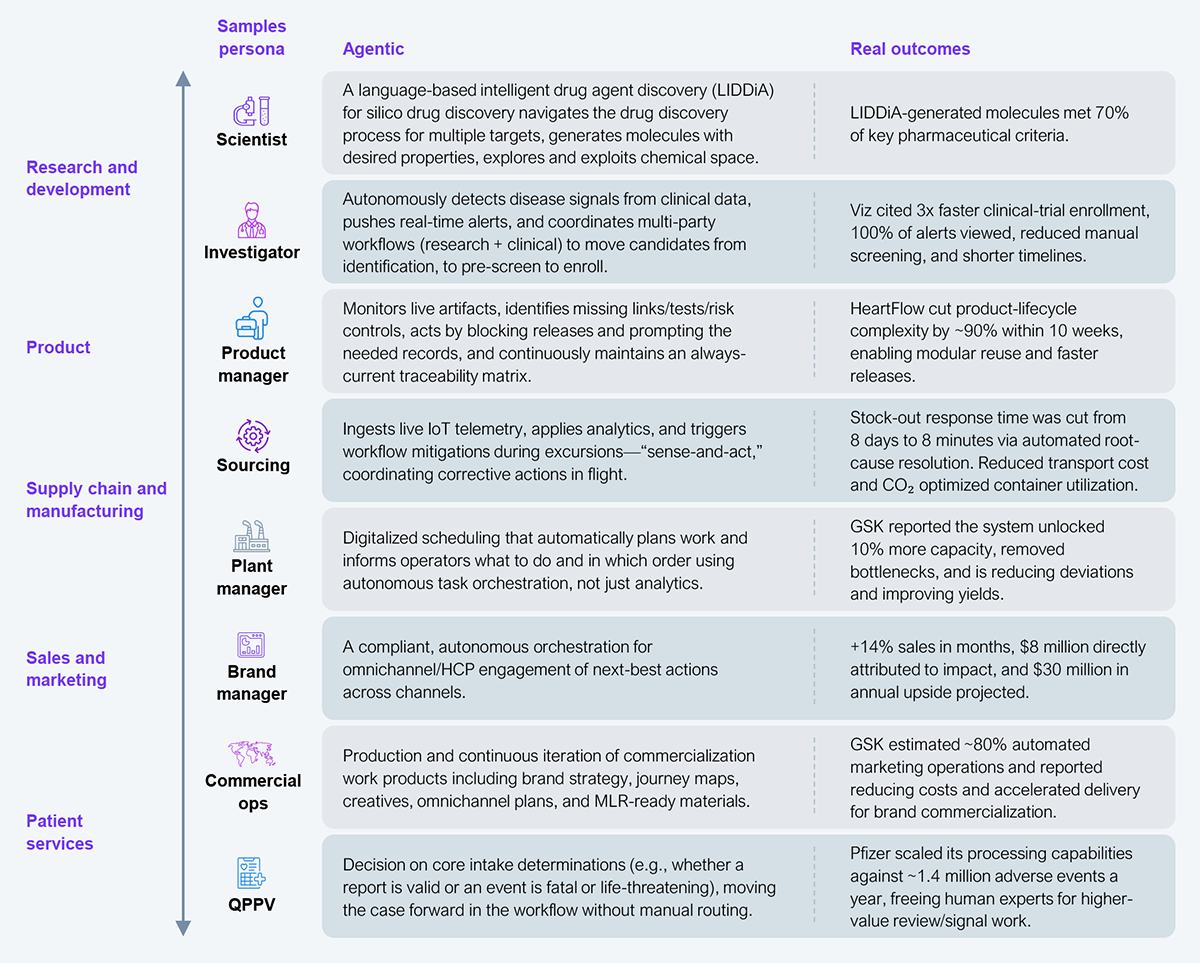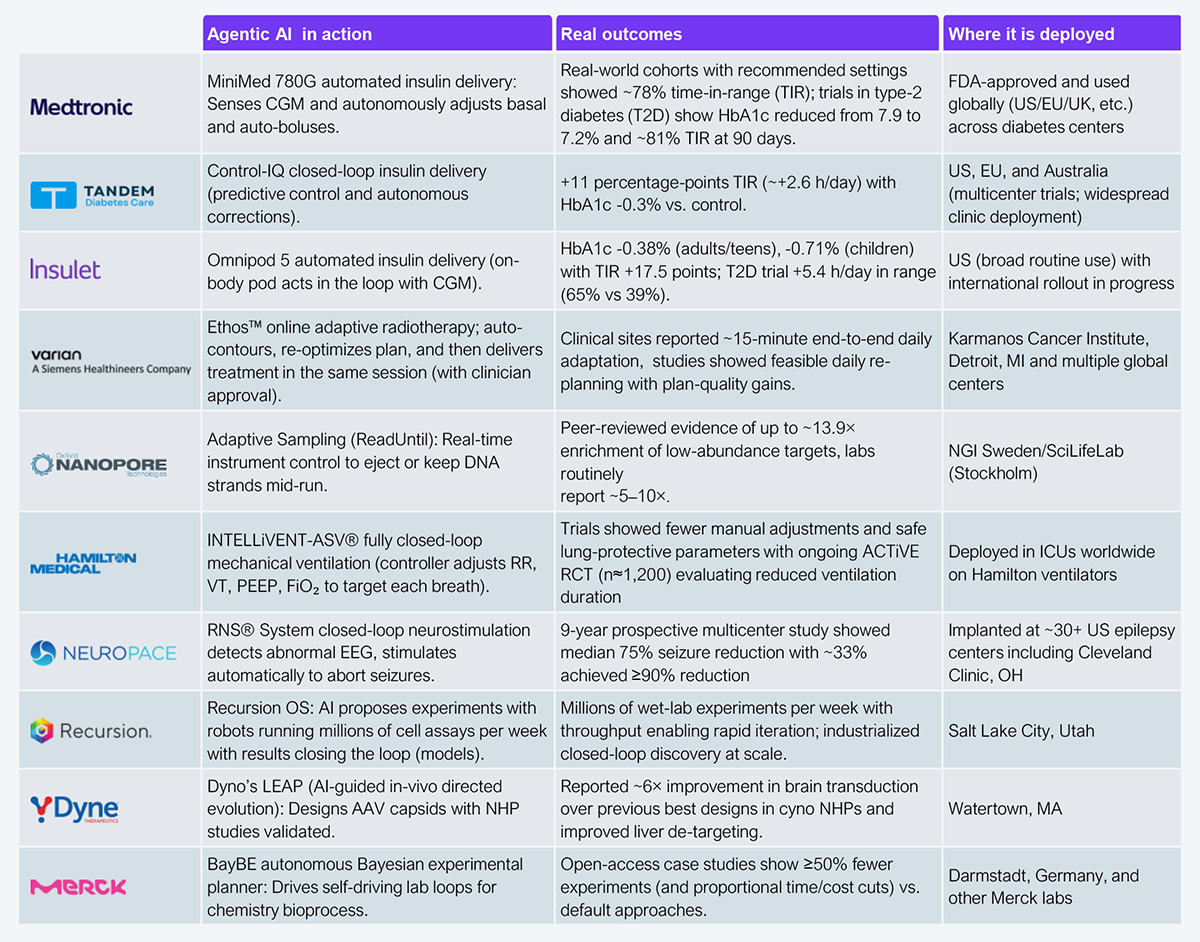Life sciences has long been delivering comfort, cure, and preventive solutions. Yet the next decade will pose unprecedented headwinds (US CMS negotiations, patent cliff, and blockbusters), with potential losses of $1–$1.5 trillion for the industry. Agentic AI must be the primary collaborator to tackle the revenue headwinds. Without it, life sciences enterprise leaders have already lost the battle.
The three key drivers to the future success of life sciences enterprises are speed to market, price to consumers, and access to markets. While not unique or new to life sciences, they will become critical to overcoming the industry’s unprecedented challenges.
Agentic AI has the attributes to collaborate with life sciences to affect the three key drivers. Contemporary examples of agentic AI point to its growing role across the life sciences value chain (see Exhibit 1) in research and development, driving accelerated drug discovery, faster and more efficient clinical trials, strategic sourcing, smart manufacturing, effective commercialization, and enhanced patient safety.

Source: HFS Research, 2025
Building on those advances, agentic AI enables innovation in ways considered science fiction in the past. It will shape a new competitive landscape anchored in the ability to address more rare diseases, personalize cures, and deliver therapies with higher efficacy. While the cost to enable AI is still in its infancy and hence evolving, it will drive down the cost to create medicine and deliver it at a much lower price, potentially making treatment affordable. The speed and cost elements will also free up resources for life sciences enterprises to explore newer markets and expand access to more populations. This trifecta of value that agentic AI can deliver is significant to the progress of science, benefiting humankind and supporting the right financial incentives.
Life sciences enterprises remain cagey about how, where, and when they deploy agentic AI, given that it is becoming their ultimate market differentiator. However, there is increasing evidence that it is being used at scale across the value chain (see Exhibit 2). Medical device companies are leading the charge with consumer-facing devices that leverage agentic AI and are gaining public trust and acceptance. Biopharma and biotech are also leveraging them, but they are mainly in stealth mode now. Notably, there is increasing evidence that regulators support agentic AI, which must be considered a tailwind for enterprises sitting on the fence.

Source: HFS Research, 2025
The potential for unprecedented and positive transformation through the power of agentic AI is here. However, it is challenging to go from imagination to ideation to operational. Five key barriers to scale must be addressed urgently, or competitors will pass by.
Moving deeper into the 21st century, global enterprises are facing various risks (geopolitics, conflicts) and uncertainties (policy, climate change impacts). The impact on life sciences enterprises is more acute. While the C-suite tries to navigate the uncontrollable, they must focus on what they can control by making agentic AI a strong ally for survival and growth.
Register now for immediate access of HFS' research, data and forward looking trends.
Get StartedIf you don't have an account, Register here |
Register now for immediate access of HFS' research, data and forward looking trends.
Get Started